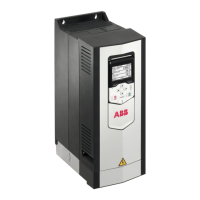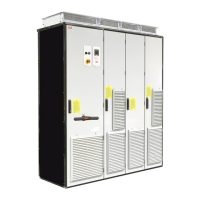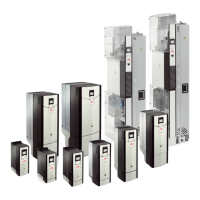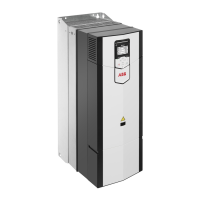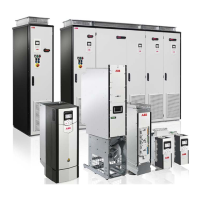Selecting the power cables
■
Power cable selection procedure and applicability check
Select each power cable as follows. Obey the local regulations.
1. Select the cable type. Obey the general guidelines and recommendations for the
drive power cabling.
2. Select the cable size. Refer to the listing of typical power cable sizes given in the
technical data.
3. Make sure that the short-circuit rating of the cable is sufficient. Take into account
the disconnection time of the protective device. If the rating is not sufficient,
select a larger cable, increase the number of parallel cables or change the cable
to a type with higher conductor temperature rating.
4. Select the cable lugs.
5. Make sure that the cable can enter the cabinet through the cable entry plate. Refer
to the dimension drawings of the drive delivery or technical data in the drive
hardware manual. For special cable entry solutions, consult ABB.
6. Make sure that there is sufficient space to install the cable(s) and cable lugs to
the terminals. Refer to the terminal and cable entry data given in the technical
data.
■
General guidelines
Select the input power and motor cables according to local regulations.
• Current: Select a cable capable of carrying the maximum load current and suitable
for the prospective short-circuit current provided by the supply network. The
method of installation and ambient temperature affect the cable current carrying
capacity. Obey local regulations and laws.
• Temperature: For an IEC installation, select a cable rated for at least 70 °C (158 °F)
maximum permissible temperature of conductor in continuous use.
For North America, select a cable rated for at least 75 °C (167 °F).
Important: For certain product types or option configurations higher temperature
rating may be required. See the technical data for details.
• Voltage: 600 V AC cable is accepted for up to 500 V AC. 750 V AC cable is accepted
for up to 600 V AC. 1000 V AC cable is accepted for up to 690 V AC.
To comply with the EMC requirements of the CE mark, use one of the preferred cable
types. See Preferred power cable types (page 101).
Symmetrical shielded cable reduces electromagnetic emission of the whole drive
system as well as the stress on motor insulation, bearing currents and wear.
Metal conduit reduces electromagnetic emission of the whole drive system.
■
Typical power cable sizes
See the technical data.
100 Guidelines for planning the electrical installation
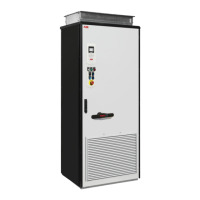
